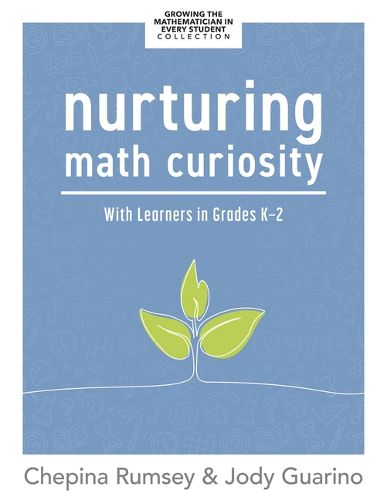Readings Newsletter
Become a Readings Member to make your shopping experience even easier.
Sign in or sign up for free!
You’re not far away from qualifying for FREE standard shipping within Australia
You’ve qualified for FREE standard shipping within Australia
The cart is loading…






Building students' confidence and conceptual understanding early sets a solid foundation for reasoning and exploration. Nurturing Math Curiosity With Learners in Grades K-2 offers educational tools and strategies teachers can use to integrate mathematical argumentation in early elementary classrooms, allowing space for students' natural wonder and curiosity to shine while, at the same time, providing opportunities for students to see mathematics content in a new light.
This book will help K-2 teachers:
Discover ways to explore early mathematical concepts Integrate classroom community building, teacher tools, and instructional strategies to nurture an environment of playful exploration Read real examples from teachers who have implemented argumentation in their classrooms Follow the layers of argumentation through an in-depth concrete example Reflect as mathematics learners with features that activate prior knowledge
Contents:
Introduction Part 1: Nurturing Our Classroom Community and Growing Our Teacher Toolbox Chapter 1: Creating a Vision Chapter 2: Nurturing a Classroom Community Chapter 3: Growing Our Teacher Toolbox Chapter 4: Connecting the Classroom Environment and Teacher Toolbox Through Routines Part 2: Growing the Layers of Argumentation Chapter 5: Exploring the First Layer--Notice, Wonder, and Beyond Chapter 6: Exploring the Second Layer--Conjecturing Chapter 7: Exploring the Third Layer--Justifying Chapter 8: Exploring the Fourth Layer--Extending Part 3: Growing More Mathematical Ideas Chapter 9: Finding Opportunities for Argumentation Chapter 10: Using Children's Literature to Engage in Argumentation Epilogue Appendix A: Blank Template Appendix B: Choral Counting Appendix C: Number of the Day Appendix D: Number of the Day With Annotations Appendix E: True or False? Appendix F: Mathematical Ideas Across Chapters References and Resources Index
$9.00 standard shipping within Australia
FREE standard shipping within Australia for orders over $100.00
Express & International shipping calculated at checkout
Building students' confidence and conceptual understanding early sets a solid foundation for reasoning and exploration. Nurturing Math Curiosity With Learners in Grades K-2 offers educational tools and strategies teachers can use to integrate mathematical argumentation in early elementary classrooms, allowing space for students' natural wonder and curiosity to shine while, at the same time, providing opportunities for students to see mathematics content in a new light.
This book will help K-2 teachers:
Discover ways to explore early mathematical concepts Integrate classroom community building, teacher tools, and instructional strategies to nurture an environment of playful exploration Read real examples from teachers who have implemented argumentation in their classrooms Follow the layers of argumentation through an in-depth concrete example Reflect as mathematics learners with features that activate prior knowledge
Contents:
Introduction Part 1: Nurturing Our Classroom Community and Growing Our Teacher Toolbox Chapter 1: Creating a Vision Chapter 2: Nurturing a Classroom Community Chapter 3: Growing Our Teacher Toolbox Chapter 4: Connecting the Classroom Environment and Teacher Toolbox Through Routines Part 2: Growing the Layers of Argumentation Chapter 5: Exploring the First Layer--Notice, Wonder, and Beyond Chapter 6: Exploring the Second Layer--Conjecturing Chapter 7: Exploring the Third Layer--Justifying Chapter 8: Exploring the Fourth Layer--Extending Part 3: Growing More Mathematical Ideas Chapter 9: Finding Opportunities for Argumentation Chapter 10: Using Children's Literature to Engage in Argumentation Epilogue Appendix A: Blank Template Appendix B: Choral Counting Appendix C: Number of the Day Appendix D: Number of the Day With Annotations Appendix E: True or False? Appendix F: Mathematical Ideas Across Chapters References and Resources Index